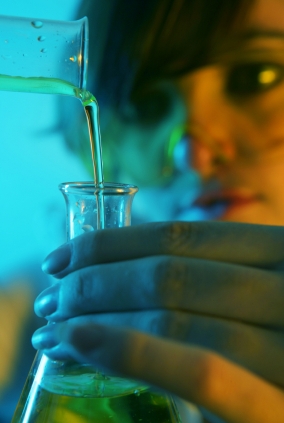Buffers are often overlooked and taken for granted by laboratory scientists, until the day comes when a bizarre artifact is observed and its origin is traced to a bad buffer.
The simplest definition of a buffer is a solution that resists changes in hydrogen ion concentration as a result of internal and environmental factors. Buffers essentially maintain pH for a system. The effective buffering range of a buffer is a factor of its pKa, the dissociation constant of the weak acid in the buffering system. Many things, such as changes in temperature or concentration, can affect the pKa of a buffer.
In 1966, Norman Good and colleagues set out to define the best buffers for biochemical systems (1). By 1980, Good and his colleagues identified twenty buffers that set the standard for biological and biochemical research use (2,3). Good set forth several criteria for the selection of these buffers:
Continue reading “What Makes a “Good” Buffer?”
